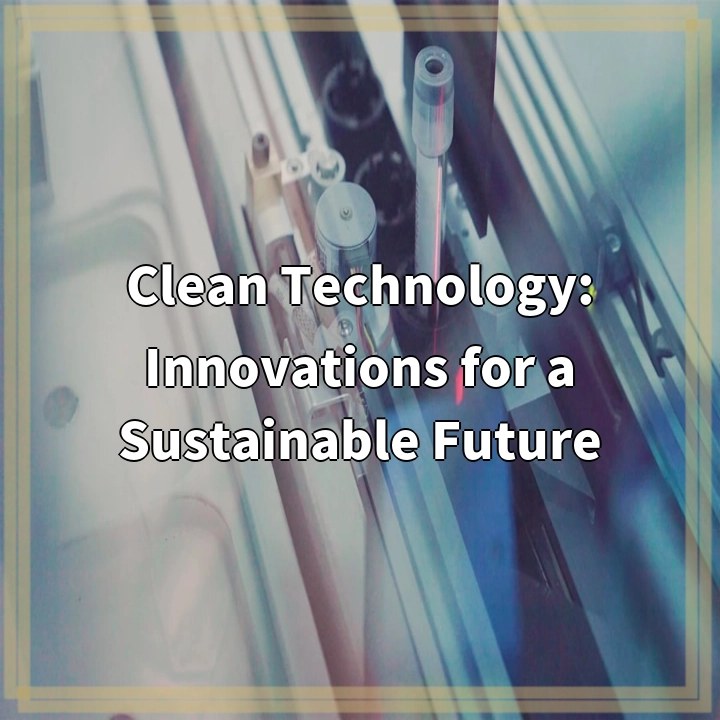
What is Clean Technology?
Clean technology, also known as cleantech, refers to innovative solutions and practices that aim to reduce the environmental impact of various industries and promote sustainability. It encompasses a wide range of technologies and processes that focus on minimizing resource consumption, reducing pollution, and mitigating climate change. Clean technology encompasses sectors such as renewable energy, green transportation, waste management, water purification, and more.
Real-World Problems Associated with Clean Technology
While clean technology offers numerous benefits and solutions for a sustainable future, it also faces certain challenges and obstacles in implementation. Understanding these real-world problems is crucial in finding effective strategies to overcome them. Here are some key challenges associated with clean technology:
1. Cost
One of the major barriers to widespread adoption of clean technology is the high initial costs involved in research, development, and deployment. Clean energy projects, for example, often require significant investment, making it challenging for smaller companies or communities with limited financial resources to adopt and benefit from these technologies.
2. Lack of Infrastructure
The successful implementation of clean technology often requires the availability of supporting infrastructure. For renewable energy sources such as solar or wind power, for instance, the installation of necessary infrastructure like power grids or charging stations can be a significant hurdle, particularly in remote or underdeveloped areas.
3. Regulatory Barriers
Clean technology initiatives often face regulatory barriers that hinder their progress. Outdated or complex regulations, lack of policy frameworks, or inconsistent government support can discourage investment and slow down the adoption of clean technologies.
4. Public Perception and Awareness
A lack of public awareness and misconceptions about clean technology can also be a challenge. Some individuals may view these innovations as less reliable or not cost-effective compared to traditional methods. Educating the public about the benefits and potential of clean technology is crucial in overcoming these barriers.
5. Limited Scalability
Certain clean technologies face limitations in terms of scalability. For example, some renewable energy sources may be location-specific and may not be as feasible or efficient in all geographical areas. Finding scalable solutions that can be applied globally or tailored to specific regions is essential for widespread adoption.
6. Supply Chain and Materials
Clean technology heavily relies on the availability and responsible sourcing of materials. Ensuring a sustainable and ethical supply chain for clean tech components can be challenging due to factors such as limited availability, extraction methods, and potential environmental and social impacts of mining or production.
While these challenges exist, it is important to remember that clean technology also offers immense potential for addressing environmental issues and fostering sustainable development. By identifying and addressing these real-world problems, we can work towards a future where clean technologies play a central role in creating a healthier and more sustainable world.

Potential Solutions for Clean Technology Challenges
Addressing the real-world problems associated with clean technology requires innovative solutions and collaborative efforts. Here are some potential strategies to overcome the challenges mentioned in the previous section:
1. Increased Financial Support
Offering financial incentives, grants, and subsidies can help reduce the high upfront costs associated with clean technology adoption. Governments, organizations, and investors can play a key role in providing funding and support for research, development, and implementation of clean technologies.
2. Infrastructure Development
Investing in the development of necessary infrastructure, such as renewable energy grids or electric vehicle charging networks, can facilitate the widespread adoption of clean technologies. Governments and private sector entities can collaborate to build the infrastructure needed to support clean technology projects.
3. Policy Reform and Supportive Regulations
Governments can play a vital role in shaping supportive policies and regulations that promote the growth of clean technology. Streamlining regulatory processes, providing tax incentives, and setting ambitious renewable energy targets are some strategies to encourage investment and drive clean technology adoption.
4. Education and Awareness
Increasing public awareness about the benefits and potential of clean technology is crucial in overcoming misconceptions and resistance. Educational campaigns, public outreach programs, and engaging with communities can help shift public perception and create a demand for clean technologies.
5. Innovation and Research
Continued innovation and research are essential to address scalability and resource-related challenges. Investing in research and development can lead to breakthroughs in clean technology, including advancements in materials, manufacturing processes, and energy storage capacity.
6. Collaborative Partnerships
Building strong partnerships between governments, businesses, academia, and communities is crucial for developing and implementing sustainable solutions. Collaboration promotes knowledge-sharing, fosters innovation, and allows for the pooling of resources and expertise to overcome the challenges faced by clean technology.
By implementing these potential solutions, we can work towards a future where clean technologies are accessible, affordable, and widely adopted. Overcoming the challenges associated with clean technology is essential to create a more sustainable and environmentally friendly world.















